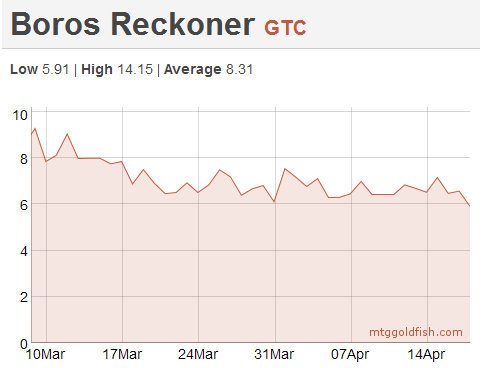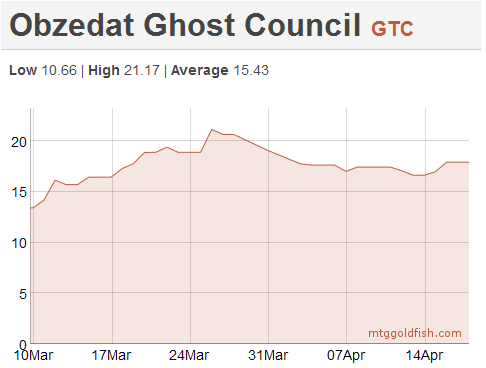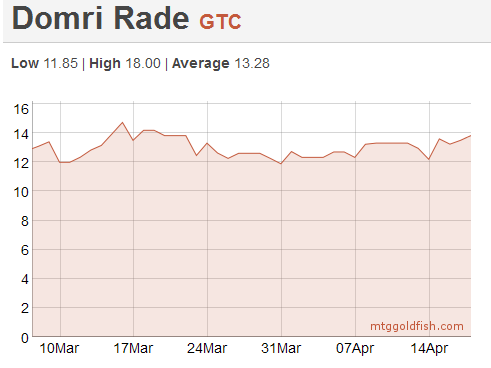Are you a Quiet Speculation member?
If not, now is a perfect time to join up! Our powerful tools, breaking-news analysis, and exclusive Discord channel will make sure you stay up to date and ahead of the curve.
The world is a complicated place. In order to get by as a species, we muddle through by making simplifications in how we perceive the world. Early in our history it made a lot more sense to think of the world from a mythological perspective. For example, it was easier to think that sunlight came down from the sky by a god driving a sun chariot across the sky. This materialized in the Greek tradition with the myth of Apollo.
The actual reality of the sun as a celestial body in the solar system was beyond us. But, the simplification of using a myth to explain the movements of the sun was useful. It allowed an understanding of the broader world, even if the understanding was inaccurate. In this case the myth of Apollo led to cognitive bias. The world was conceived of as being ruled by the whims of gods. Overcoming this cognitive bias was necessary for the development of the human species as we know it today.
Cognitive Bias and the MTGO Market
Cognitive bias is alive and well in the MTGO market. As MTGO speculators, one of our key advantages comes from identifying cognitive bias in the wider player base, and then acting on that bias. By recognizing the bias, it can be exploited for profit.
For example, if one were to ask back in January about the price of Sphinx's Revelation, someone might suggest it's a 20-25 ticket card. By January, everyone on MTGO knew what a Sphinx's Revelation was worth. The cognitive bias in this case is called anchoring. The price of Sphinx's Revelation was anchored in the 20-25 ticket range.
This is a useful short-hand way to conceptualize price for an MTGO player. If one is looking to sell an extra copy and looking at different prices from a bunch of bots, you might get a wide variety of prices, some far too low. Having the price anchor in your mind is a good way to avoid getting burned. Price anchoring gives a good sense for what a card is worth and protects a player from a bad outcome, i.e. selling Sphinx's Revelation for 10 tix.
However, price anchoring can lead to problems. Although this cognitive bias has its uses, when things are shifting it becomes detrimental. Examining the assumptions that went into the price anchor reveals how. In this case, the fundamental assumption that went into valuing Sphinx's Revelation in the 20-25 ticket range was all things being equal. In other words, "All things being equal, Sphinx's Revelation is a 20-25 ticket card." What happens when things change?
Enter Gatecrash
With the release of Gatecrash, all things were no longer equal. The price anchor of Sphinx's Revelation depended on a world of steady RTR drafting. When RTR drafting switched over to GTC drafting, the old price anchor of 20-25 tix became a detrimental and exploitable bias. Anticipating this change could have yielded large profits. Once drafting switched over to GGG, fewer copies of Sphinx's Revelation were coming onto the market, but its usefulness in Standard did not diminish. The price started going up.
Where Is the Bias Right Now?
With the concept of price anchoring in mind, examining the MTGO market right now might yield other exploitable opportunities. Here are a few price-anchored cards that have found a relatively stable price band during the last month of GGG drafting.
Boros Reckoner is a 6-7 ticket card but has some downward price momentum. It appears in both Block and Standard Constructed.
Obzedat, Ghost Council is a 16-18 ticket card and looks to be stable in this range. Obzedat is a mythic and an important component of Block Constructed, so if the Block metagame shifts away from using this card after DGM enters the mix, then there will be some downward pressure on Obzedat's price.
Domri Rade is a 12-13 ticket card that sees sporadic play in Block, Standard and Modern.
When players think about these cards, they "know" what the price is because they are familiar with how their prices have moved in a period of triple GTC drafting. What will happen with the shift to DGR drafting? If history is any guide, these are set for a price increase. However, unlike Sphinx's Revelation after GTC hit, these cards will still be entering the market via DGR draft and sealed deck, which tempers the upside. Looking out to the Fall though, this might be the cheapest time to acquire these. I'm curious to find out myself!
Portfolio Update
This is a brief rundown of what I am buying, selling and looking out for in the market.
Selling:
- I've just about completed selling off my mythic rares from Scars of Mirrodin block. Prices haven't really recovered on these, but in order to generate some tix for other opportunities it was necessary to sell them down.
- Jace, Architect of Thought is a card I've been holding since November. It's seen stable prices in the 13-14 tix range, but I suspect that long-term buyers have been entering the market whenever this dips down. I've been selling some now with an eye to rebuying during DGM release events. My sense is that the long-term buyers will lose their appetite for this card once supply from drafters starts entering the market again and a price drop will ensue.
Buying:
- This week my buying focused on GTC boosters. It struck me that as a short- to medium-term opportunity, GTC boosters are currently underpriced at around 3 tix. Check out the forums on MTGO for my reasoning, but essentially this feels like the probable bottom. Previously we saw RTR boosters drop to 2.6 during GTC release events. However, that was because RTR went from being drafted in RRR to not being drafted at all. The shift for GTC will be to go from GGG to DGR, so demand will not completely collapse. If they dip to 2.8 tix or below, I will continue to buy.
- Boros Reckoner is a card I have started to acquire. I am happy to buy these for around 6 tix.
Watching:
- If you couldn't tell from the gist of my article, I've also been watching Obzedat, Ghost Council and Domri Rade. I acquired quite a few copies of these during release events. Since that time Domri Rade has been remarkably stable, while Obzedat, Ghost Council has risen by 4-6 tix. They might see a drop in price during DGM release events so I will be adding to my position if they show any price weakness.







https://www.quietspeculation.com/2013/10/insider-the-revenue-review-latest-developments/